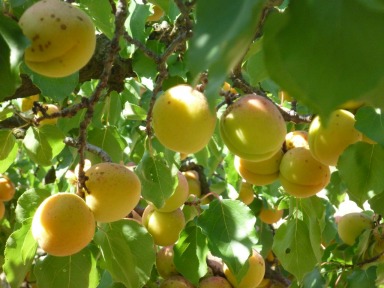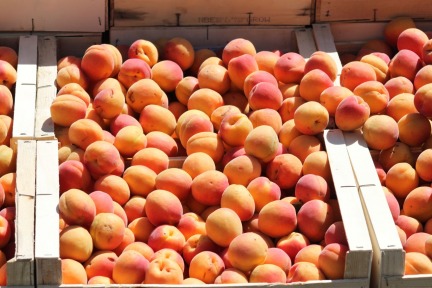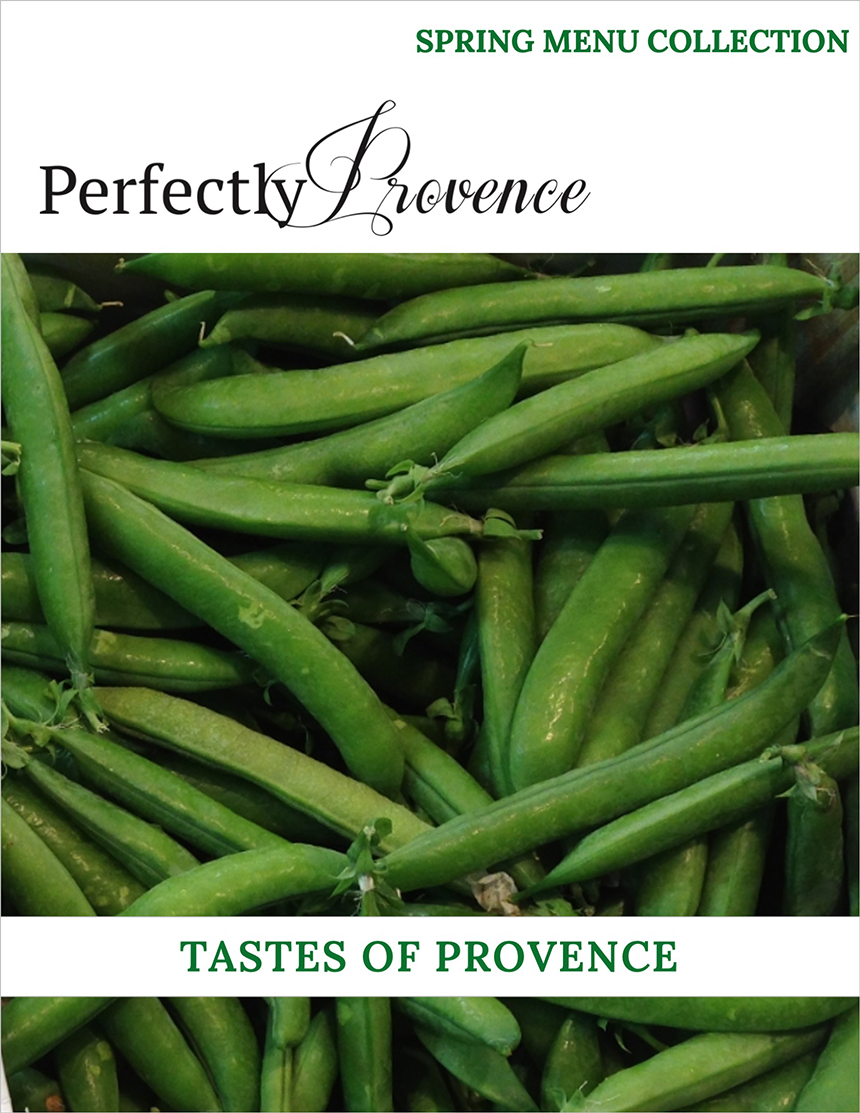Literally as old as the hills, the fruit of the apricot tree are confirmed to have been domesticated since the Bronze Age. Although, the exact origin of the tree is debated;
- there is evidence of consumption of the fruit in both China and India between 3-4,000 B.C.
- the apricot in dry format was certainly exchanged along Persian trade routes.
- the scientific name, is Prunus armeniaca (Armenian plum), likely as a result of the ubiquitous presence in Armenia since antiquity.
- The fruit was eventually introduced to the Greeks and then adopted by the Romans.

Apricots prefer warm climates and will tolerate some temperate regions, such as southern France, as long as there is a slight risk of frost. The trees are small, and the fruit is produced reasonably early in the growing season. During Ginger and Nutmeg’s French holiday, the apricots started to appear in the markets shortly after the cherries. The apricot is a stone fruit, from the same family as the plum and the peach. These little beauties pack a surprisingly strong nutritional “punch”. They are high in fiber, low-calorie, contain vitamins A and C and have offer elevated levels of carotenoids (prevention against heart disease and reduction of cholesterol).
With such a long history of human consumption, there have been (possibly still are) many beliefs surround the benefits of the apricot including its possible aphrodisiac effects. Total world production of apricots, in 2008, was 2.7 million tons of which France made up 6%. France’s production may be relatively small globally, but the country is quite involved in scientific research around improved apricot varietals.
The apricot is only available for a short period and the fruit spoils quite easily – indulge while they are fresh.

The following recipe is not French. Nutmeg’s friend Sassafras is both a fantastic hostess and guest. In a single week, this lady suffered through two long transatlantic flights and somehow she still found the time to whip up some Apricot Chews. The group tried this delightful snack during a ski weekend in Chamonix. Whether you like apricots in their natural, fresh state or as dried fruit or not at all, you will enjoy this recipe.
- 1 Cup + 2 Tablespoons Flour (all-purpose)
- 2 Cups Brown Sugar
- 1 Teaspoon (each) Baking Soda, Baking Powder and Cream of Tartar
- 1 Teaspoon Salt
- ½ Cup Unsalted Butter
- 2 Large Eggs
- ½ Teaspoon Almond Extract
- 1 Teaspoon Baking Powder
- 1 Cup Shredded Coconut, unsweetened
- 1 Cup Dried Apricots, chopped
- ½ Cup Pecans, chopped
- To make the base, combine 1 cup of flour, oats, 1 cup brown sugar, baking soda, powder and cream of tartar and ½ teaspoon of salt. Mix well.
- Add the butter and mix until crumbly.
- Press into a rectangular baking dish (13x9x2) and bake for 10 minutes @ 350F.
- For the topping, whisk the eggs until well beaten, add 1 cup brown sugar and almond extract.
- In a separate bowl mix 2 tablespoons of flour, baking powder and ½ teaspoon of salt. Add to egg mixture and mix well.
- Add the coconut and apricots until well blended.
- Pour mixture over the base and sprinkle with pecan pieces.
- Return to oven and bake for another 20 minutes.
- Cool and cut into squares.
Nutmeg and Ginger did end up with some homemade apricot jam; made by an expert. So they have been celebrating the healthy ancient apricot with their coffee and toast in the mornings.
Food Travel Tags:
Apricot Recipes, Easy healthy desserts, Easy healthy snack recipes, French Food











